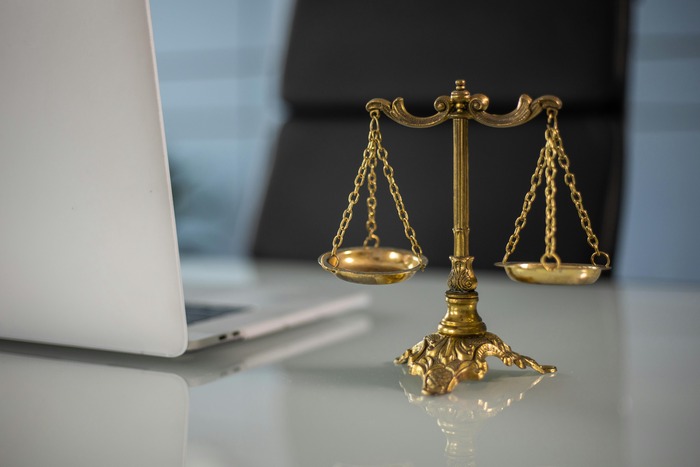In an era where technology is rapidly evolving, the legal framework surrounding the Court of Protection is also experiencing significant changes. This transformation is crucial to ensure that the rights and interests of vulnerable individuals are safeguarded in the modern world.
As you delve into the intricacies of this topic, understanding the role of a court of protection deputy becomes essential. Their responsibilities are expanding, particularly in relation to digital assets and online privacy, which are becoming increasingly significant in today’s digital age.
In this article, we’ll explore some ways technology is impacting the landscape of legal safeguards, like court of protection.
The Role of Technology in Modern Legal Frameworks
The integration of technology into legal systems is not just a trend but a necessity. It has paved the way for more efficient and transparent processes within the court of protection. Digital tools are being leveraged to manage sensitive information, such as financial records and medical histories, with greater precision and security.
This shift requires legal professionals to stay updated with the latest technological advancements and incorporate them effectively into their practices.
Enhancing Accessibility and Efficiency
One of the most notable benefits of incorporating technology into the court of protection is enhanced accessibility. Digital platforms enable individuals to access court services and information more conveniently.
This is especially beneficial for individuals with disabilities or those living in remote areas, who might otherwise find it challenging to attend court proceedings in person. Moreover, technology has significantly improved the efficiency of legal processes.
Automated systems and digital management tools streamline administrative tasks, reducing the time and effort required to process cases. This efficiency not only benefits legal professionals but also ensures that vulnerable individuals receive timely support and protection.
Safeguarding Digital Privacy
As the digital landscape continues to expand, so do concerns about privacy and security. The protection of personal data and digital assets has become a priority for the Court of Protection. Legal innovations are being introduced to address these concerns, ensuring that the confidentiality and integrity of sensitive information are maintained.
The European Union has been at the forefront of these efforts, setting standards for digital privacy. You can learn more about the initiatives undertaken by the EU in their official documentation on digital privacy protection.
These advancements not only uphold the traditional values of the legal system but also adapt them to the requirements of the digital age. It is imperative for legal professionals to remain vigilant and proactive in incorporating these advancements to safeguard the rights of those under their care.
Legal Innovation
Innovation in legal technologies has the potential to revolutionise the court of protection. By embracing modern tools and methodologies, the legal system can better serve the needs of vulnerable individuals. As technology reshapes the legal landscape, it is crucial for stakeholders to engage in continuous learning and adaptation.
Fostering Legal Education and Collaboration
The digital age is not only about technological advancements; it also presents an opportunity to enhance legal education and collaboration. Online platforms and resources allow legal professionals to access a wealth of information and training materials.
This continuous education is vital for adapting to new challenges and opportunities that arise within the court of protection. Furthermore, digital tools facilitate collaboration between legal professionals, enabling them to share best practices and knowledge.
Such collaboration is crucial for maintaining high standards of practice and ensuring that innovative solutions are effectively implemented across the board. Legal institutions and educators are increasingly focusing on developing comprehensive curricula that cover these emerging trends and technologies.
Adapting to a Changing Legal Environment
As technology continues to evolve, the legal environment must adapt accordingly. This adaptability is essential for addressing complex issues such as digital fraud and cybercrime, which pose significant threats to individuals under the protection of the court.
By integrating digital solutions, the legal system can better detect, prevent, and respond to these challenges. Moreover, the dynamic nature of the digital age demands that legal professionals remain flexible in their approaches.
Embracing a mindset of continuous improvement and innovation is key to ensuring that the Court of Protection remains effective. This adaptability not only enhances the protection of vulnerable individuals but also ensures that their rights are upheld in an increasingly complex world.
Final Thoughts of the Court of Protection in the Digital Age
The transformation of the Court of Protection in the digital age signifies a pivotal shift towards more robust and innovative legal safeguards. By embracing technological advancements, the legal system can enhance accessibility, efficiency, and security for those it serves. However, this transformation is not without its challenges.
Legal professionals must remain vigilant and proactive in adapting to the ever-evolving digital landscape. The importance of ongoing education and collaboration cannot be overstated. By fostering a culture of learning and innovation, the Court of Protection can continue to meet the needs of vulnerable individuals in a rapidly changing world.
As you explore the implications of these changes, it is essential to stay informed about the latest developments and engage with resources that offer insights into the intersection of technology and law. Ultimately, the digital age presents an opportunity to transform legal safeguards for the better.
By harnessing the power of technology and innovation, the Court of Protection can uphold its commitment to protecting the rights and interests of those in need, ensuring a safer and more secure future for all.
Please be advised this article is for informational purposes only and should not be used as a substitute for advice from a trained legal professional. Please seek the advice of a legal professional if you’re facing issues regarding Court of Protection responsibilities.


